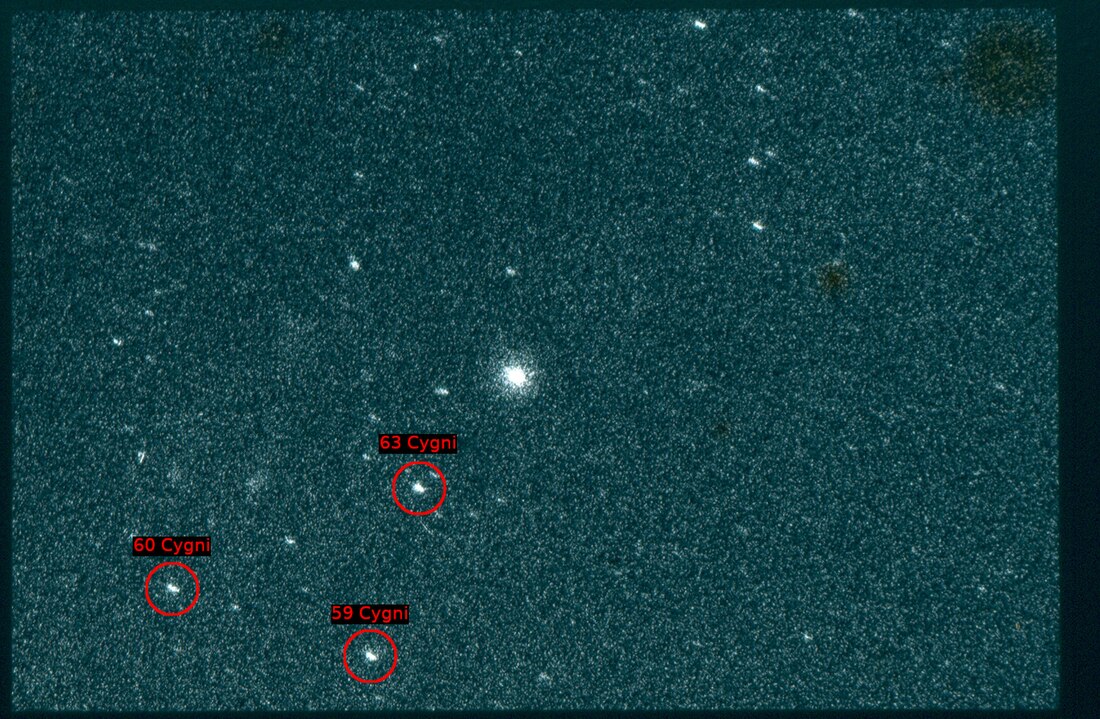Top Qs
Timeline
Chat
Perspective
V1500 Cygni
Star in the constellation Cygnus From Wikipedia, the free encyclopedia
Remove ads
V1500 Cygni or Nova Cygni 1975 was a bright nova occurring in 1975 in the constellation Cygnus. It had the second highest intrinsic brightness of any nova of the 20th century, exceeded only by CP Puppis in 1942.[10] V1500 Cygni was firstly reported by Minoru Honda of Kurashiki, Japan at 13h40m, 29 August 1975 (UT), shining at an apparent brightness of magnitude 3.0.[11] But the first discoverer in time was Kentaro Osada (August 29, 11h30m UT).[12] It had brightened to magnitude 1.7 on the next day, and then rapidly faded. It remained visible to the naked eye for about a week, and 680 days after reaching maximum the star had dimmed by 12.5 magnitudes.


It is an AM Herculis type star, consisting of a red dwarf secondary depositing a stream of material onto a highly magnetized white dwarf primary. The distance of the V1500 Cygni was calculated in 1977 by the McDonald Observatory at 1.95 kiloparsecs (6,360 light years).[13] More recently the Gaia space observatory determined a distance of approximately 5,100 light years.[1] Additionally, V1500 Cyg was the first asynchronous polar to be discovered. This distinction refers to the fact that the white dwarf's spin period is slightly different from the binary orbital period. [14] However, by 2016, x-ray observations strongly suggested that the white dwarf rotation had returned to normal synchronization with the orbit.[4]
V1500 Cygni has a remnant typical of very fast novae, consisting of some clumps and some spherically symmetric diffuse material.[15]
Remove ads
See also
References
Further reading
External links
Wikiwand - on
Seamless Wikipedia browsing. On steroids.
Remove ads

